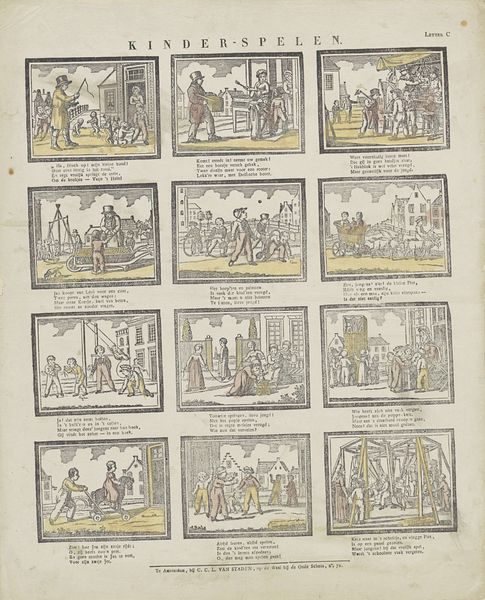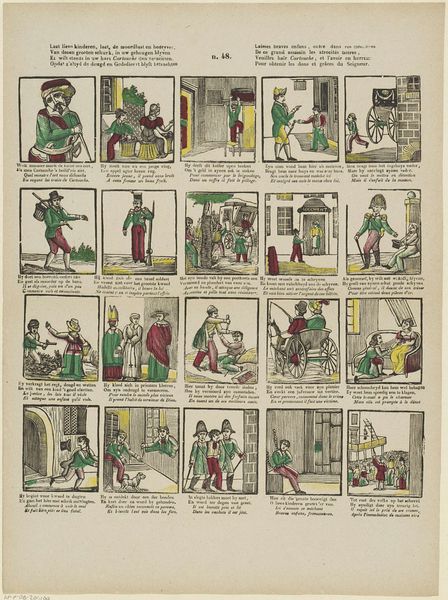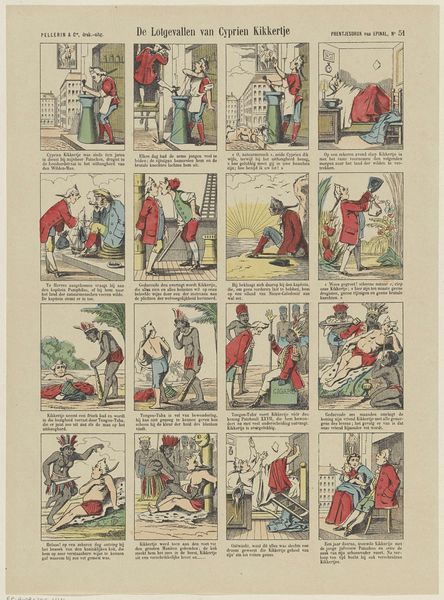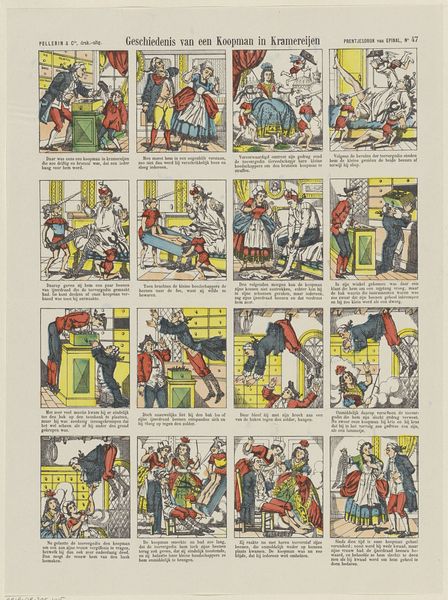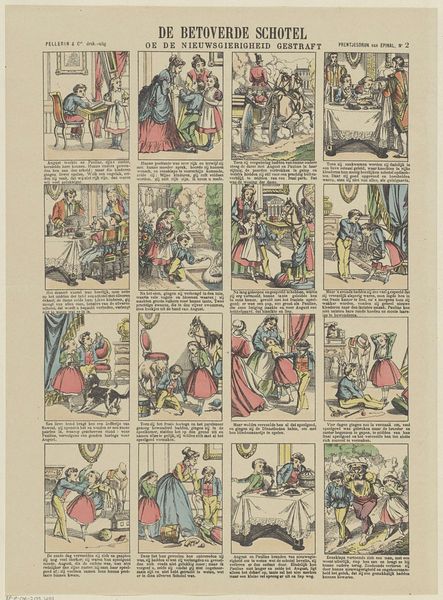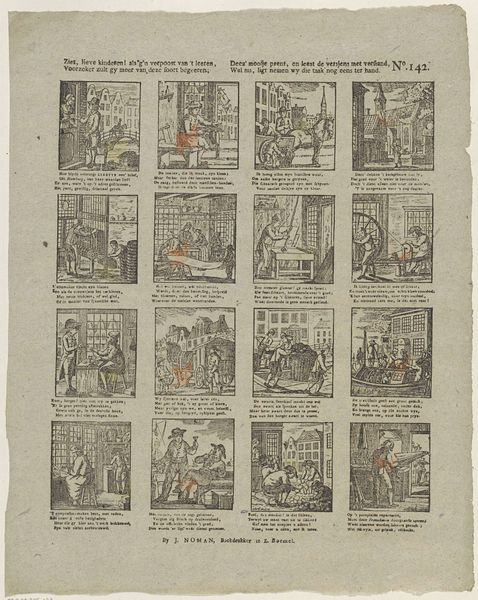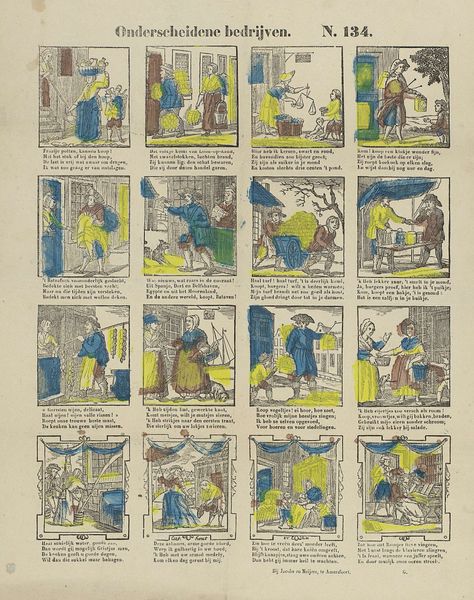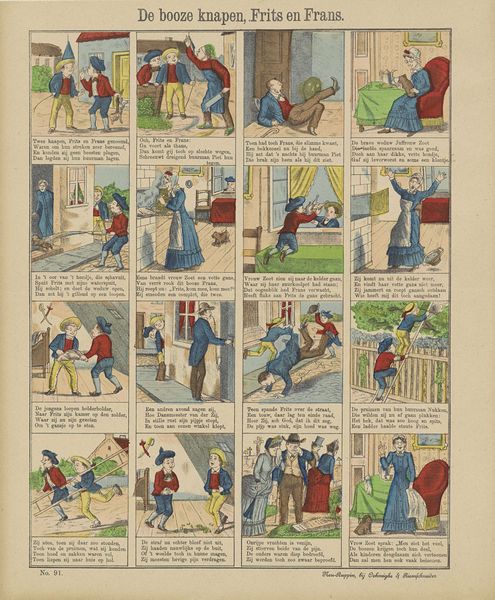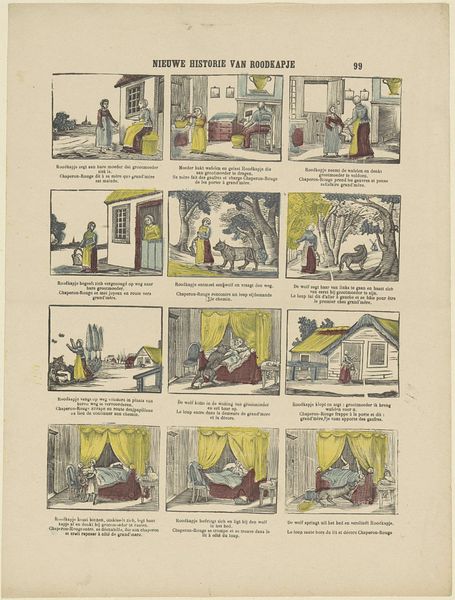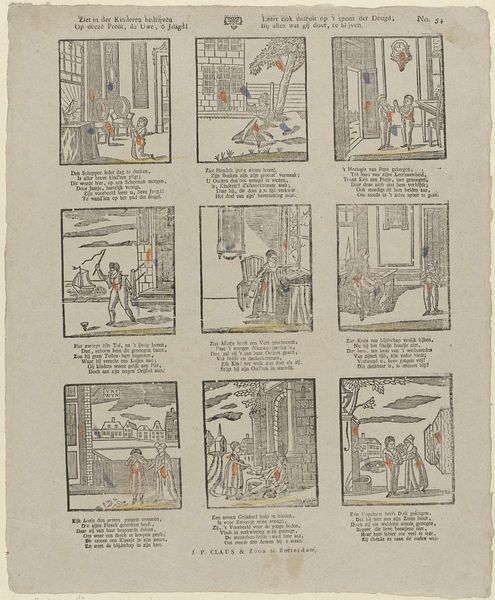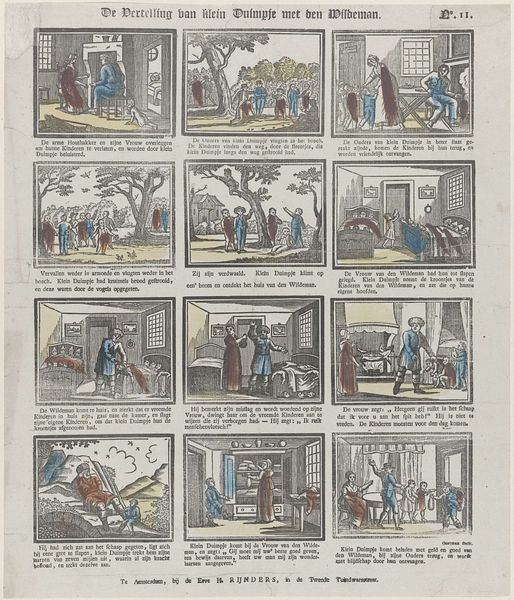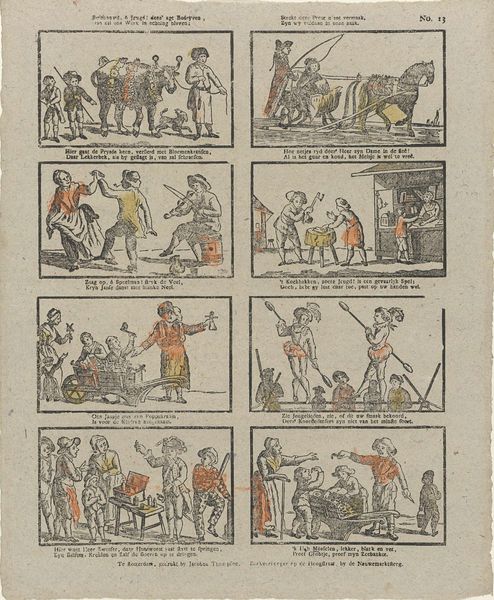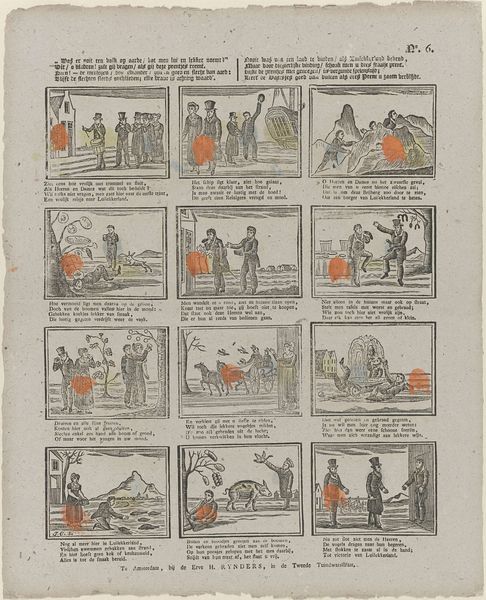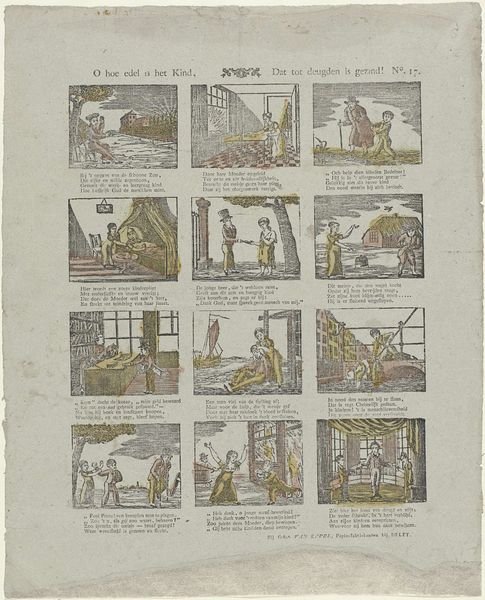
#
comic strip sketch
#
aged paper
#
narrative-art
#
dutch-golden-age
# print
#
sketch book
#
personal sketchbook
#
sketchwork
#
journal
#
folk-art
#
comic
#
pen work
#
sketchbook drawing
#
genre-painting
#
storyboard and sketchbook work
#
sketchbook art
Dimensions: height 407 mm, width 337 mm
Copyright: Rijks Museum: Open Domain
Curator: Here we have "Vertelling van den Schoorsteenveger," a print likely created between 1828 and 1937 by Oehmigke & Riemschnieder. My immediate impression is how much this piece reads like a storyboard. Editor: Yes, I see that immediately! A rather charming, if somewhat simplistic, narrative unfolds across these twelve panels, depicting a chimney sweep and the mischievous situations he finds himself in. The visual texture feels folk-loric, perhaps a tale meant for children? Curator: Structurally, it's interesting how the grid format mimics comic strips that became popularized later. Observe the somewhat crude rendering of figures, with strong outlines and minimal shading. This contributes to its accessible, almost democratic aesthetic. Editor: The central character, the chimney sweep, immediately evokes a Dickensian image – soot-covered, exploited, yet strangely enduring. His blackened skin becomes a powerful symbol of labor and marginalization. The recurring ladder acts almost as a visual motif. Curator: Note how the color palette—though limited—is used to emphasize spatial depth and hierarchy within each panel. See the limited use of red to suggest both danger and excitement, which in a semiotic context heightens narrative tension. Editor: The children surrounding him seem intent on causing chaos at every turn! Symbolically, they embody disruption. What narrative thread is drawn between innocence, exploitation, and social disruption in the Dutch context of its creation? Curator: The repetition of the chimney sweep, and certain structural elements within each framed composition creates a certain type of meaning... I agree; they underscore the repetitive nature of his labor, a grim, but crucial part of the developing industrial world at this time. Editor: It's an ambiguous piece, isn't it? We are presented with some scenes that represent harm. How do these symbols weave through the comic, both warning and potentially endorsing specific roles or beliefs? Curator: From a purely formal perspective, the use of line, color and the arrangement of these individual, paneled frames come together. I find these panels fascinating to break down into compositional techniques. Editor: Indeed! A glimpse into social anxieties. We can see how people created images and told stories through a dark lens!
Comments
No comments
Be the first to comment and join the conversation on the ultimate creative platform.
